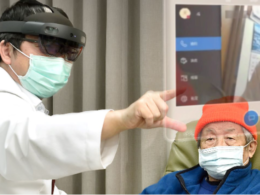Health Leaders Media
ERIC WICKLUND
MAY 05, 2022
Self-contained telehealth kiosks had a short-lived heyday about 10 years ago. Now they’re getting a second chance, as healthcare organizations look at new ways to improve access and deliver care to remote populations.
KEY TAKEAWAYS
Self-contained telehealth kiosks enjoyed some popularity roughly 10 years ago with the Healthspot, but a lack of clear ROI and that company’s eventual bankruptcy put an end to the trend.
Telehealth kiosks then evolved into smaller workstations and cubicles, and they’ve been placed in busy emergency departments, community health clinics, libraries, pharmacies and retail locations, offering on-demand access to a virtual health visit for popualtions who can’t or won’t go to a doctor’s office or hospital.
Newer models like the H3 Cube aim to improve access to care in rural and remote communities by giving residents access to a self-contained healthcare visit and allowing healthcare providers to extend their reach and help underserved populations like the homeless, veterans, low-income and Native communities.
Originally published at












